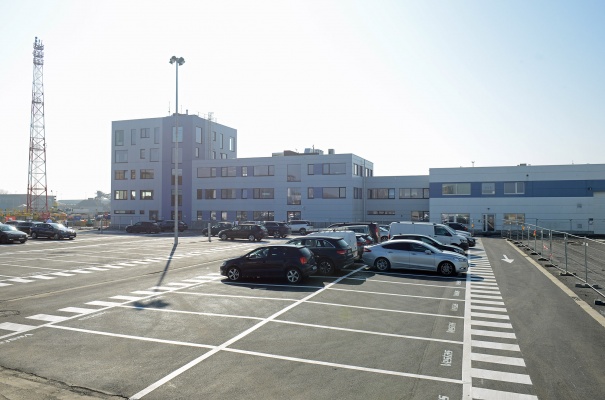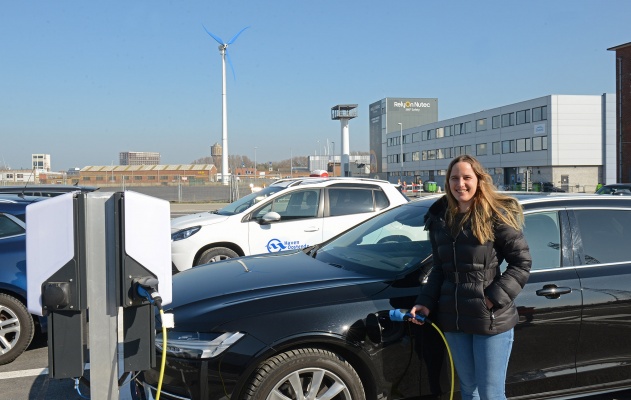Port Oostende sets next step in energy transition
New car park with 56 electric charging stations
Port Oostende opened a new car park with 56 electric charging stations. This substantial investment is in line with previous efforts to generate renewable energy such as solar panels and the Xant wind turbine. By producing our own energy sustainably, less CO2 is emitted. Less CO2 emission is good for the climate and fits in the broader project to make the ecological footprint of Port Oostende smaller.
Less emmission of CO2 and fine particles
The new car park of 3500 m² is located at the business cluster on the REBO heavy weight terminal near the Esplanadestraat. The maritime business zone needed a sustainable parking solution. In consultation with the customers, it was decided to invest in electric charging spaces. The new car park provides space for 137 cars and has 44 electric charging points. Another, already existing car park was adapted and equipped with 12 charging points.
The current supply exceeds the demand for electric charging places. In this way Port Oostende is responding to the growing trend of electric vehicles. By avoiding fossil fuels in mobility applications, there is less emission of CO2 and fine particles.
Care for Safety, Environment and Health
'Care for Safety, Environment and Health' is the first policy priority of Port Oostende.
The 56 electric charging points are connected to Port Oostende's own main voltage network. The main grid is injected with green energy, originating from the existing solar panels and the Xant wind turbine.
"With the construction of a new car park with 56 electric charging points Port Oostende takes another step towards making its surroundings more sustainable for the benefit of the environment and the climate. This investment ensures that the already present solar panels and our own wind turbine are used in the best possible way."
"We must use raw materials sparingly so that future generations have every opportunity. The use of fossil fuels for mobility should be replaced by the use of green electricity or hydrogen wherever possible. With this effort, Port Oostende is helping to improve the quality of life in the city."
European framework
This investment is part of the European project DUAL Ports (Interreg 5B North Sea). The project aims to reduce the CO2 footprint of ports. In the next phase, the project will focus on asphalt that captures CO2 and on smart LED lighting. DUAL Ports is a European eco-innovative ports programme for Regional Enterprise Ports (REPs). The focus is on the implementation of sustainable technologies in which the impact of CO2-avoidance measures can be measured

Port Oostende
Port Oostende focuses on continuity, growth and employment within five pillars: Blue Economy, Bulk & Project Cargo, Cruises & Roll-On Roll-Off, Circular Industry and the Fisheries Sector. These sectors are further expanded on the basis of two foundations: prioritising safety, health and the environment and second supporting innovation and development.


